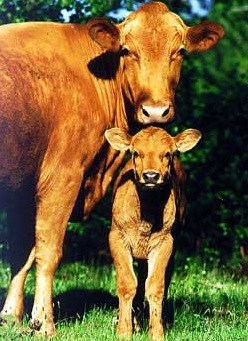Type the name of the breed you're looking for below
[wpdreams_ajaxsearchlite] Don't see the breed your're looking for? Click here and let us know!
Swedish Red Polled cattle
| Place of Origin | Sweden |
| Origin | In the 1970´s there were only one farm using Swedish Red Polled(SRP) cattle and they only had 23 animals. The genetic material was too small for survival so imports of foreign cattle were made to save the breed. The foreign breed most like the SRP was the East-Norwegian Red Polled Cattle, and therefore that was the genes used to save the SRP. SRP were very common in the landscapes Dalarna and Bohuslän and also in the area around Stockholm. SRP can live on poor woodlands and give quite good milk, both in taste and quantity. The breed is almost extinct. |
| Purpose | Dairy. |
| Appearance | The Swedish Red Polled varies in colour from brown to a yellowish red. Some individuals will have white markings on the belly. Females stand 117-123 cm, and give 5500 kg milk annually. |
| Horns | Polled (hornless) |
| Cows Average Weight | 300 - 400 kg (661 - 882 lbs.) |



